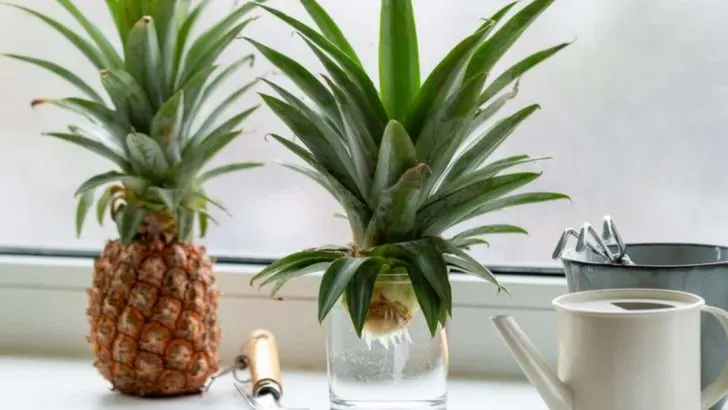Your next houseplant might be hiding in your grocery bag. That avocado pit? It’s a baby tree in disguise. The limp green onion bottoms? Garden gold. And that sweet potato? Let’s just say it’s ready to sprout into something fabulous. You don’t need a greenhouse or a science degree. Just a windowsill, some toothpicks, and a little patience. From pineapple crowns to ginger knobs, your kitchen scraps are secret garden starters. These 11 propagation tricks are part science, part sorcery. They stretch your budget and multiply your plant babies like magic. No fancy gear. No big spend. Just dirt, water, and curiosity. Ready to turn your compost pile into a nursery? Let the celery regrow. Let the basil root. And let your produce pull double duty—on your plate and in your pots.
Avocado Seed Sprouting
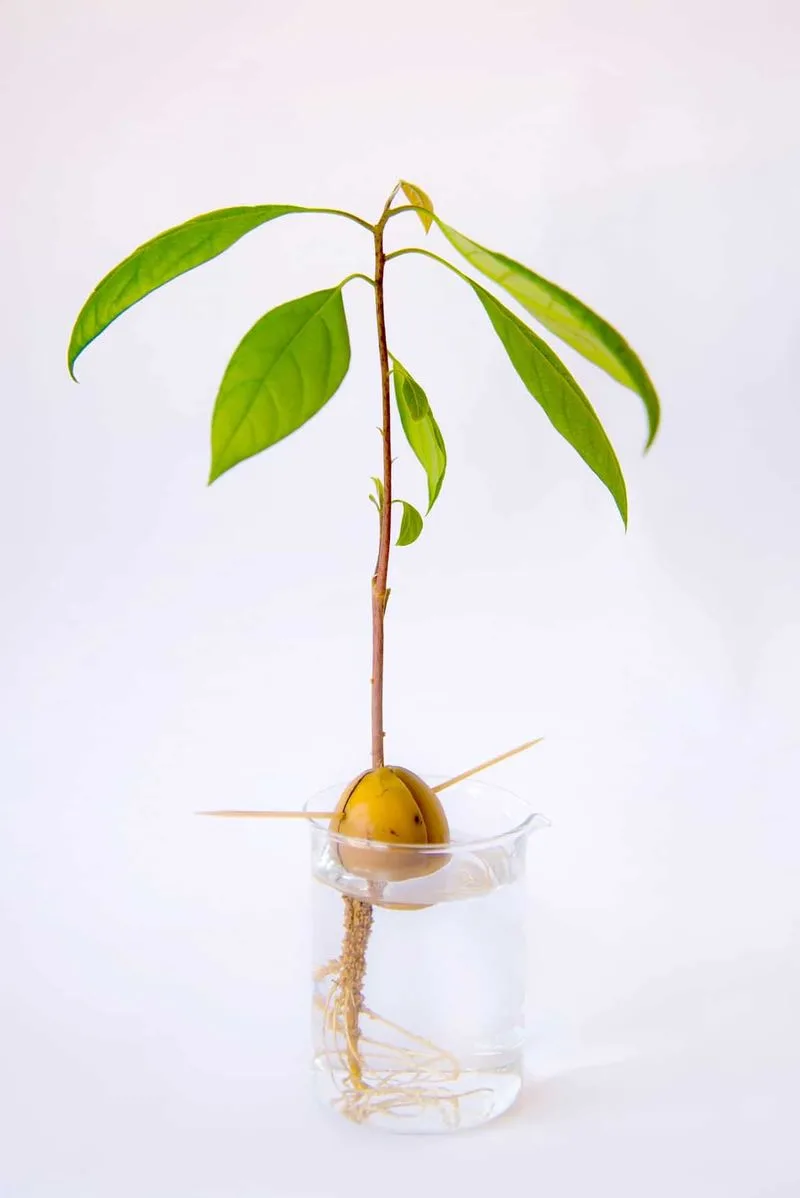
Transforming an avocado pit into a houseplant is like witnessing magic. Begin by suspending the seed over a glass of water using toothpicks, ensuring the broad end stays submerged. Place the setup on a sunny windowsill and watch as roots emerge within weeks.
Once the roots are substantial and a sprout appears, transfer the seedling into a pot with soil. Did you know? Avocado trees are native to south-central Mexico. Despite their origins, they adapt well to indoor environments, offering a lush green addition.
This easy-to-follow process brings the joy of gardening to your kitchen.
Pineapple Top Planting
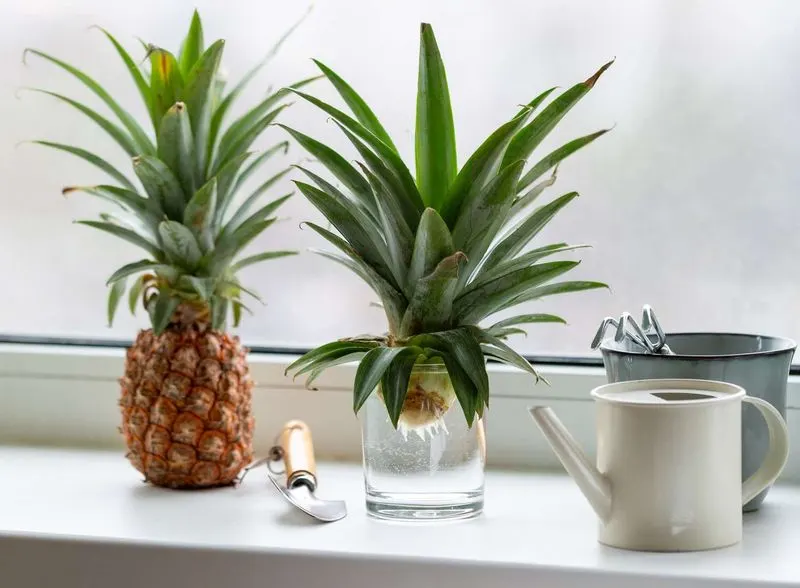
Turning a pineapple top into a leafy houseplant is a tropical delight. Slice off the top and remove a few lower leaves. Allow it to dry for a couple of days. Once ready, plant it in a pot with well-draining soil.
Water the plant sparingly, keeping it near a sunny spot. In time, you’ll notice new growth sprouting from the center. Fun fact: Pineapples are bromeliads and can produce offsets called pups.
Growing a pineapple indoors offers a touch of exotic flair, perfect for those dreaming of island escapes. Enjoy the process and the vibrant greenery it brings!
Potato Eye Planting
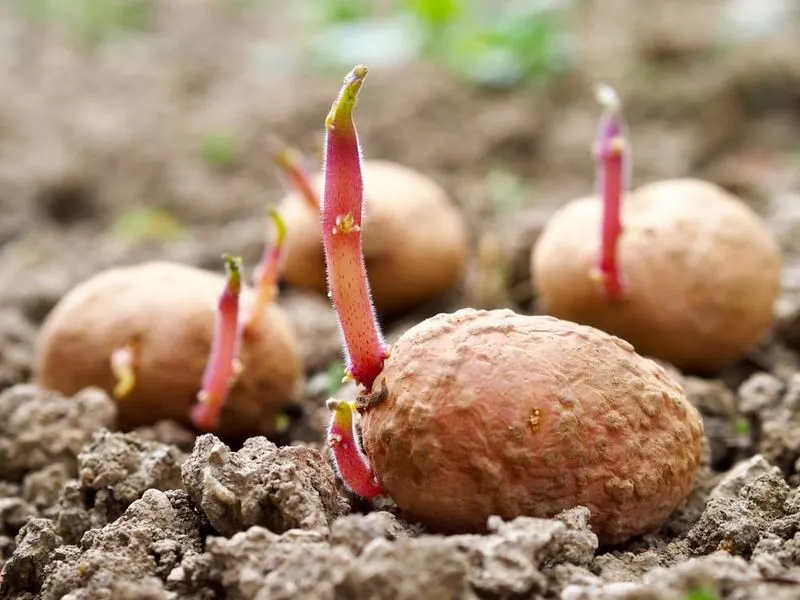
Who knew potatoes could be so generous? By cutting a potato into sections, each with an eye, you can cultivate a bounty of plants. Bury each piece in soil, with eyes facing upward, and water moderately.
Before long, green shoots will sprout, signaling the start of a new potato plant. Did you know? Potatoes are part of the nightshade family, sharing kinship with tomatoes and eggplants.
This simple technique not only provides a source of homegrown potatoes but also adds greenery to your garden or pots. Enjoy the unexpected harvest!
Garlic Clove Growing
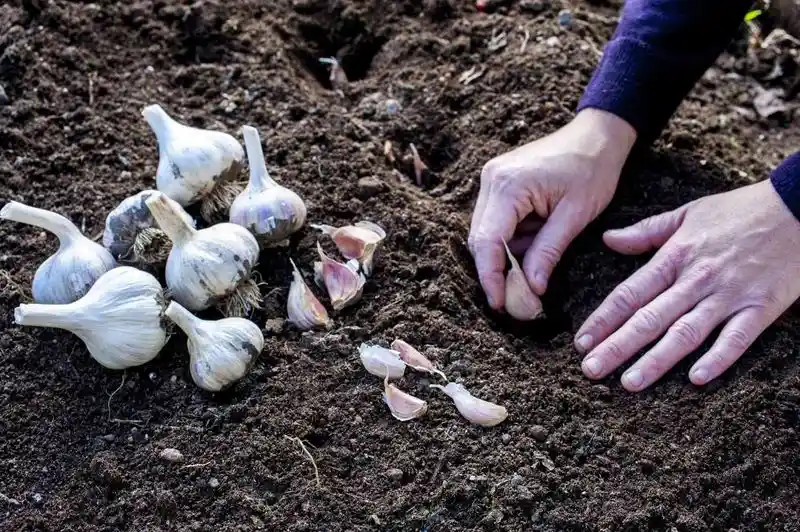
From a single garlic clove emerges an entire plant. Plant cloves pointy end up in rich soil, spacing them a few inches apart. Water lightly and let nature do the rest.
Within weeks, green shoots will rise, heralding the garlic’s growth. Fun fact: Garlic has been cultivated for over 7,000 years, prized for both culinary and medicinal properties.
This method is perfect for garlic lovers looking to have fresh cloves at their fingertips. Revel in the satisfaction of growing such a versatile kitchen staple, right from your home garden.
Celery Base Regrowth
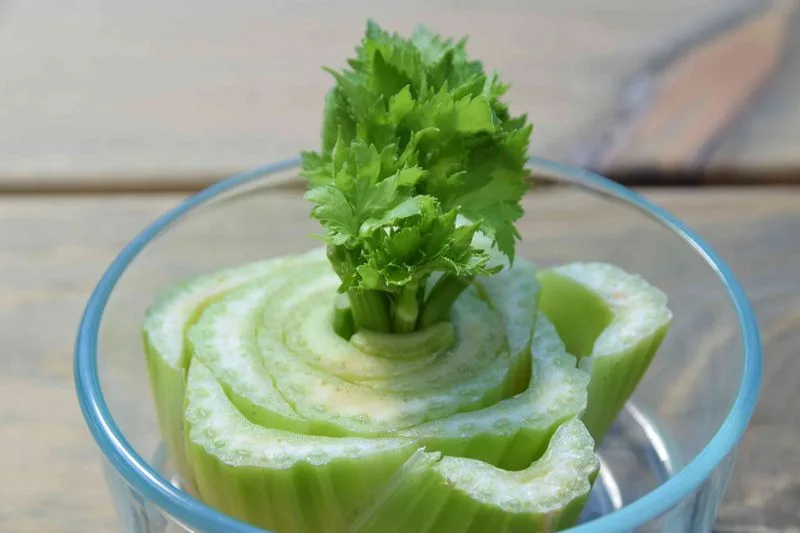
Celery offers a second chance at life with its regrowing base. After cutting, place the celery’s base in a shallow water dish, making sure to keep it well-lit.
New leaves will start to grow from the center, and within a couple of weeks, you can plant it in soil for further development. Fun fact: Celery was initially used as a medicinal plant before becoming a kitchen staple.
This technique not only reduces waste but also adds a fresh, green element to your home. Watch your efforts flourish with each new sprout!
Ginger Rhizome Planting
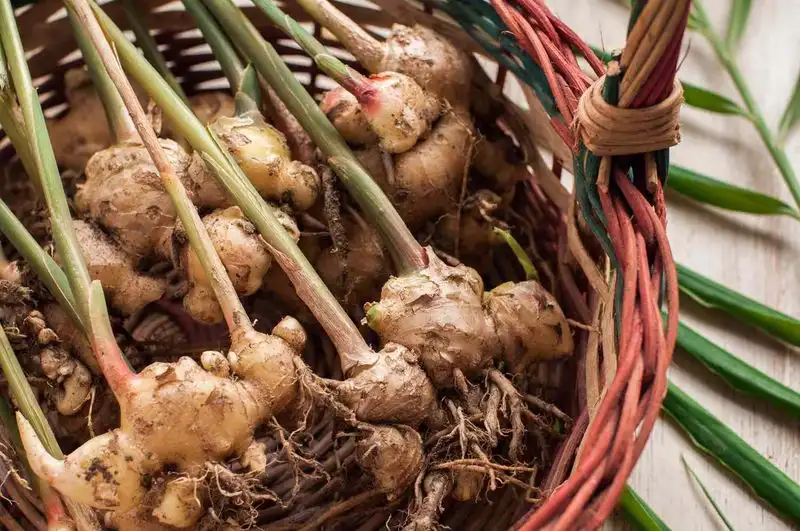
Ginger, a kitchen favorite, can be easily propagated from a rhizome. Select a piece with visible buds and plant it in moist soil, bud side up.
Place the pot in a warm, well-lit area. In time, leafy shoots will appear, adding a spicy aroma to your garden space. Did you know? Ginger’s history dates back over 5,000 years, originating in Southeast Asia.
This propagation technique invites a bit of the exotic into your home, offering both culinary and ornamental value. Savor the growth as you nurture this fragrant plant.
Lettuce Heart Revival
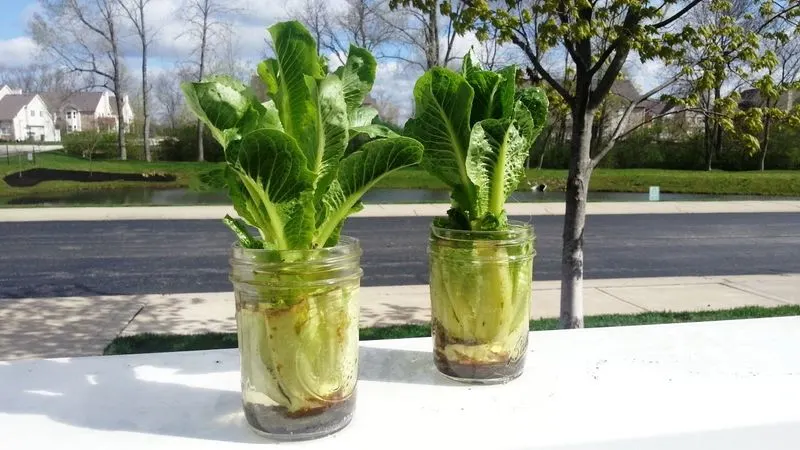
Lettuce hearts have a surprising ability to regrow. Place the heart in a shallow dish of water and position it in sunlight. New leaves will soon emerge, ready for harvesting.
Replace the water regularly and watch your leafy greens flourish. Fun fact: Lettuce was first cultivated by the ancient Egyptians, who revered it for its medicinal properties.
This method is a wonderful way to extend your salad greens and enjoy fresh produce. Cultivate a love for gardening with each crisp, new leaf growing in your home.
Carrot Top Growing
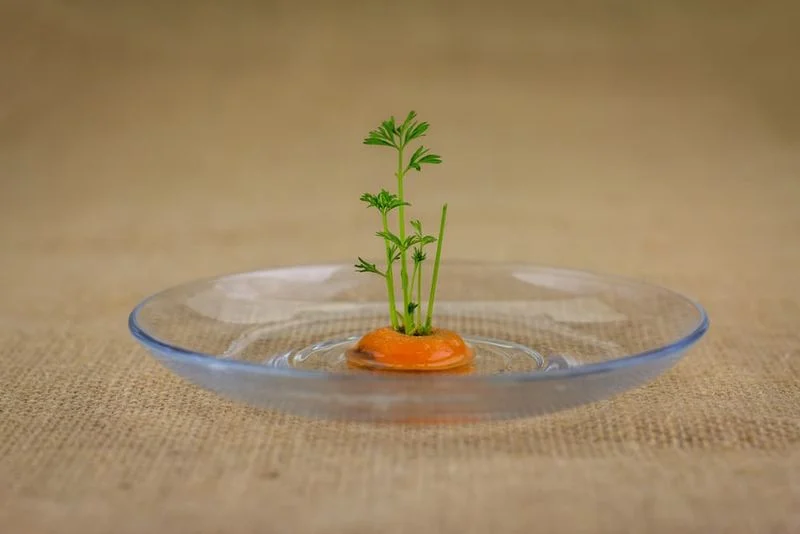
Carrots may not regrow as roots, but their tops offer a burst of greenery. Place trimmed tops in a shallow dish of water, and watch as they sprout new leaves.
Keep the dish in a sunny spot, changing the water frequently. The vibrant foliage can be used for garnishing or as a fresh herb substitute. Fun fact: Carrot greens are rich in vitamins and can be made into pesto.
Embrace this easy method for a splash of green in your kitchen, bringing life to leftover carrot tops.
Mango Seed Starting
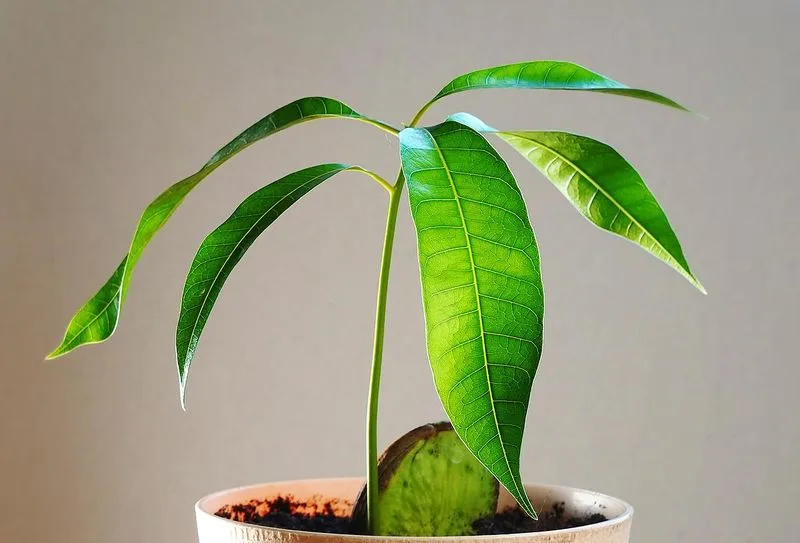
Mangoes are exotic fruits with seeds that can be cultivated into lush plants. Start by removing the husk and placing the seed in a pot of well-draining soil.
Keep it warm and water moderately. Soon, a sprout will emerge, promising a flourishing houseplant. Did you know? Mangoes are native to South Asia and have been grown for over 4,000 years.
This propagation method brings a touch of the tropics into your home, offering both beauty and a sense of accomplishment as you watch your new plant thrive.
Tomato Seedling Cultivation
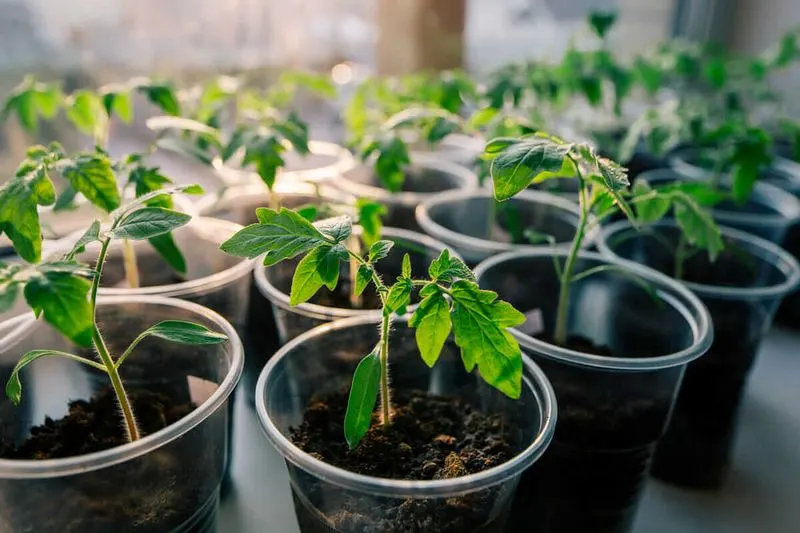
Tomatoes are a staple that can be easily propagated from seeds. Save seeds from ripe tomatoes, dry them, and plant in a tray of soil.
Keep them warm and moist to encourage germination. Before long, you’ll have a tray of seedlings ready for transplanting. Fun fact: Tomatoes were once feared as poisonous by Europeans due to their relation to nightshade plants.
Enjoy the satisfaction of watching tiny seeds transform into robust plants, offering a bounty of fresh tomatoes for your culinary adventures.
Apple Seed Sowing
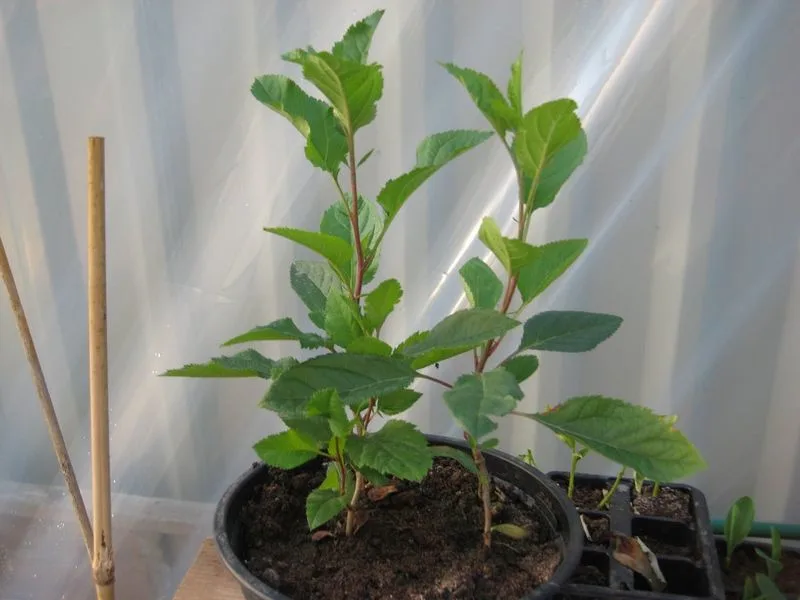
Apple seeds hold the potential for creating new trees. Save and dry seeds from your favorite apples, then plant them in small pots.
Keep the soil moist and provide plenty of sunlight. Over time, seedlings will emerge, offering the promise of future apple harvests. Did you know? The apple is associated with mythologies and folklore across cultures, symbolizing knowledge and temptation.
This method is great for those dreaming of an orchard. Nurture your seedlings and watch them grow into fruitful trees that tell tales of ancient legends.

